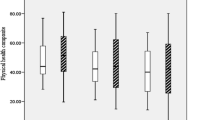Opinion statement
-
•The majority of patients with multiple sclerosis (MS) experience genitourinary and bowel dysfunction over the course of their illness [1,2,3 Class II].
-
•Lower extremity pyramidal signs are excellent predictors of concurrent bladder dysfunction.
-
•Constipation is the most common bowel dysfunction, which results from a range of causes including pelvic floor spasticity, decreased gastro-colic reflex, inadequate hydration, medications, immobility, poor physical conditioning, and weak abdominal muscles.
-
•Despite the advent of new therapeutic modalities, the physician and patient commonly overlook sexual dysfunction. A detailed history of the patient is crucial to determine the cause of the dysfunction. Fatigue, pain, mood disorders, spasticity, bowel, and bladder dysfunction can all interfere with normal sexual functioning, and these subjects should be explored in detail in order to plan for proper treatment.
-
•Integrated treatment plans, often in conjunction with an urologist, can lead to amelioration of symptoms.
Similar content being viewed by others
References
Chia YW, Fowler C, Kamm M, et al.: Prevalence of bowel dysfunction in patients with multiple sclerosis and bladder dysfunction. J Neurol 1995, 242:105–108.
Bakke A, Myhr K, Gronning M, Nyland H: Bladder, bowel and sexual dysfunction in patients with multiple sclerosis-a cohort study. Scand J Urol Nephrol 1996, 179(suppl):61–66.
Hinds J, Eidelman B, Wald A: Prevalence of bowel dysfunction in multiple sclerosis: a population survey. Gastroenterology 1990, 98:1538–1542.
Goldstein I, Siroky MB, Sax S, Krane RJ: Neurological abnormalities in multiple sclerosis. J Urol 1982, 128:541.
Sakakibara R, Hattori T, Yasuda K, Yamanishi T: Micturitional disturbance and the pontine tegmental lesion: urodynamics and MRI analyses of vascular cases. J Neurol Sci 1996, 141:105–110.
Manante G, Melchionda D, Uncini A: Urinary retention in bilateral pontine tumor: evidence for a pontine micturition center in humans. J Neurol Neurosurg Psychiatry 1996, 61:528–536.
Kim YH, Goodman C, Omessi E, et al.: The correlation of urodynamics findings with cranial magnetic resonance imaging findings in multiple sclerosis. J Urol 1998, 159:972.
Holland NJ: Bowel management. In Multiple Sclerosis in Clinical Practice. Edited by van den Noort S, Holland NJ. New York: Demos; 1999:83. Important article on managing bowel problems in multiple sclerosis patients.
Betts CD, Jones SJ, Fowler CJ: Erectile dysfunction in multiple sclerosis: associated neurological and neurophysiological deficits, and treatment of the condition. Brain 1994, 117:1303–1310.
Lundberg PO, Hutler B: Female sexual dysfunction in multiple sclerosis: a review. Sex Dis 1996, 14:65–72.
Nilvebrant L, Glas G, Jonsson A, Sparf B: The in vitro pharmacological profile of tolterodine: a new agent for the treatment of urinary incontinence. Neurourol Urodyn 1994, 13:433–435.
Cruz F, Guimaraes M, Silva C, et al.: Desensitization of bladder sensory fibers by intravesical capsaicin has long lasting clinical and urodynamics effects in patients with hyperactive or hypersensitive bladder dysfunction. J Urol 1997, 157:585–589.
Hilton P, Hertogs G, de Wall H, Dalm E: The use of Desmopressin (DDAVP) for nocturia in women with multiple sclerosis. J Neurol Neurosurg Psychiatry 1983, 46:854–855.
Kinn AC, Larsson P: Desmopressin: a new principle for symptomatic treatment of urgency and incontinence in patients with multiple sclerosis. Scand J Nephrol 1990, 24:109–112.
Goldstein I, Lue T, Padma-Nathan H, et al.: Oral sildenafil in the treatment of erectile dysfunction. N Engl J Med 1998, 338:1397–1404.
Sauerwein D, Gross AJ, Kutzenberger J, Ringert RH: Wallstents in patients with detrusor-sphincter dysynergia. J Urol 1995, 154:495.
Schwartz SL, Kennelly MJ, McGuire EJ, Faeber GJ: Incontinent ileo-vesicostomy urinary diversion in the treatment of lower urinary tract dysfunction. J Urol 1994, 152:99.
Lewis R: Long term results of penile prosthetic implants. Urol Clin North Am 1995, 22:847–856.
Author information
Authors and Affiliations
Rights and permissions
About this article
Cite this article
Hawker, K.S., Frohman, E.M. Bladder, bowel, and sexual dysfunction in multiple sclerosis. Curr Treat Options Neurol 3, 207–213 (2001). https://doi.org/10.1007/s11940-001-0002-0
Issue Date:
DOI: https://doi.org/10.1007/s11940-001-0002-0




